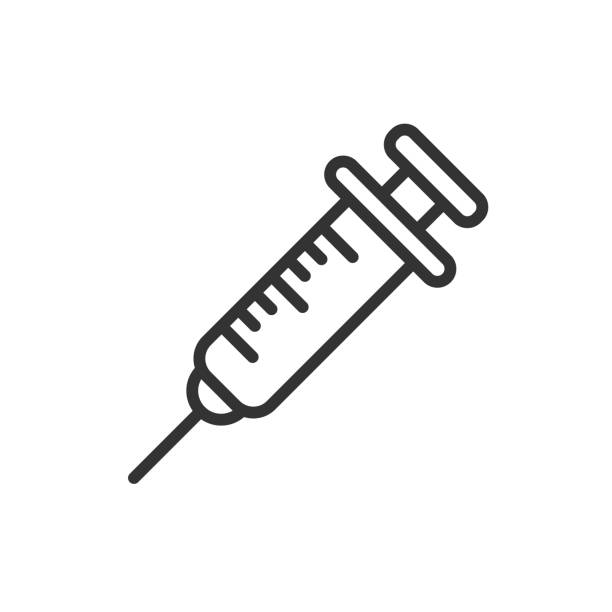Indications
The activity of Cilastatin & Imipenem against an unusually broad spectrum of pathogens makes it particularly useful in the treatment of polymicrobic mixed aerobic/anaerobic infections as well as initial therapy prior to the identification of the causative organisms. Cilastatin & Imipenem is indicated for the treatment of the following infections due to susceptible organisms:
- Intra-abdominal infections
- Lower respiratory tract infections
- Gynaecological infections
- Septicaemia
- Genitourinary tract infections
- Bone and joint infections
- Skin and soft tissue infections
- Endocardit
Pharmacology
Imipenem acts as an antimicrobial through the inhibition of cell wall synthesis of various gram-positive and gram-negative bacteria. This inhibition of cell wall synthesis in gram-negative bateria is attained by binding to pencillin binding proteins (PBPs). In E. coli and selected strains of P. aeruginosa, imipenem has shown to have the highest affinity to PBP-2, PBP-1a, and PBP-1b. This preferential binding to PBP-2 and PBP-1b results in the direct conversion of the individual cell to a spheroblast, which leads to rapid cell lysis and death without filament formation.
Cilastatin is a specific and reversible renal dehydropeptidase-I inhibitor. Since the antibiotic, imipenem, is hydrolyzed by dehydropeptidase-I, which resides in the brush border of the renal tubule, cilastatin is administered with imipenem to block the metabolism and thus the inactivation of imipenem so that antibacterial levels of imipenem can be attained in the urine. The drug also prevents the metabolism of leukotriene D4 to leukotriene E4 through the inhibition of leukotriene D4 dipeptidase.
Dosage And Administration
The total daily dosage of Imipenem should be based on the type or severity of infection and given in equally divided doses based on consideration of degree of susceptibility of the pathogens, renal function and body-weight.
Imipenem & Cilastatin IV: Up to 500 mg dose should be given over 20 to 30 minutes; > 500 mg dose should be infused over 40 to 60 minutes. In patients who develop nausea during the infusion, the rate of infusion may be slowed.
Adult: Normal daily dose is 1-2 g administered in 3-4 divided doses. For the treatment of moderate infection, a 1 g b.i.d. dosage regimen may also be used. In infections due to less susceptible organisms, the daily dosage may be increased to a maximum of 4 g/day or 50 mg/kg/day, whichever is lower.
- Mild infection: 250 mg 6 hourly (1 gm/day)
- Moderate infection: 500 mg 8 hourly or 1 gm 12 hourly (1.5-2 gm/day)
- Severe infection with fully susceptible microorganism: 500 mg 6 hourly (2gm/day)
- Severe infection with less susceptible organisms (primarily some strains of P. aeruginosa): 1 gm 3-4 times daily (3-4 gm/day)
Paediatric Dosing Schedule:
- ≥ 3 months of age: the recommended dose for non-CNS infections is 15-25 mg/kg/dose administered every six hours. The maximum daily dose for treatment of infections with fully susceptible organisms is 2.0 g per day, and of infections with moderately susceptible organisms is 4.0 g/day. Higher doses (up to 90 mg/kg/day in older children) have been used in patients with cystic fibrosis.
- ≤3 months of age: Following dosage schedule is recommended for non-CNS infections:
- <1 week of age: 25 mg/kg every 12 hrs
- 1-4 weeks of age: 25 mg/kg every 8 hrs
- 4 weeks-3 months of age: 25 mg/kg every 6 hrs.
Imipenem is not recommended for the therapy of meningitis. If meningitis is suspected, an appropriate antibiotic should be used. Imipenem and cilastatin for injection is not recommended in pediatric patients <30 kg with impaired renal function, as no data are available.
Interaction
Concurrent admin with probenecid may increase the half-life of cilastatin. Increased risk of generalised seizures when used concurrently with ganciclovir.
Contraindications
Contraindicated in patients who have demonstrated hypersensitivity to this product.
Side Effects
Most common side effects with imipenem are nausea and vomiting. Other side effects reported with this drug are diarrhea, rash, thrombophlebitis, thrombocytosis, neutro-penia, eosinophilia and derangements of liver and renal functions. Use of imipenem is not recommended for patient with history of anaphylactic reaction with penicillin.
Pregnancy And Lactation
Pregnancy: Category C. There are no adequate and well controlled studies in pregnant women. Cispenam should be used during pregnancy only if the potential benefit justifies the potential risk to the fetus.
Lactation: Imipenem has been detected in human milk. If the use of Cispenam is deemed essential, the patient should stop nursing.
Overdose Effects
In the case of overdosage, discontinue Imipenem/Cilastatin, treat symptomatically, and institute supportive measures as required. Imipenem/Cilastatin Sodium is hemodialyzable.
Therapeutic Class
Other beta-lactam Antibiotics
Use in special populations
Dosage adjustment in renal impairment:
- CrCl >71: No changes.
- CrCl 41-70: Max 37.5 mg/kg/day or 3 g/day. (Range: 9.4 - 37.5 mg/kg/day) divided q6-8h.
- CrCl 21-40: Max 25 mg/kg/day or 2 g/day. (Range: 6.25 - 25 mg/kg/day) divided q6-12h.
- CrCl 6-20: Max 12.5 mg/kg/day (max dose 1 g/day). Range: 6.25 - 12.5 mg/kg/day) divided q12h. (Usual: 250mg q12h)
- Dialysis Hemodialysis: 125 - 500 mg q12h. (Max 12.5 mg/kg/day). Give dose after dialysis.
- Peritonial Dialysis: 125 - 250 mg q12h
